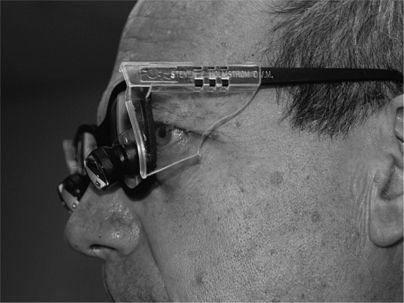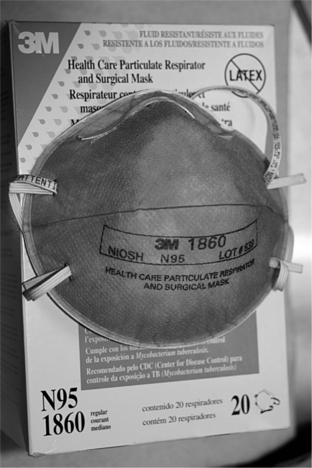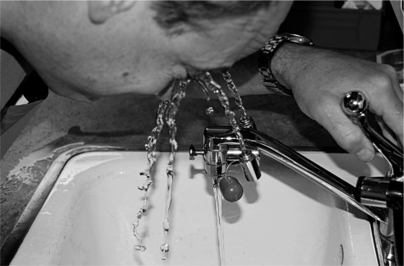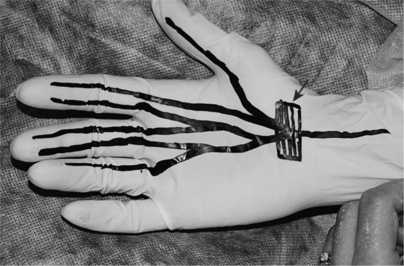Chapter 13 General Health Safety and Ergonomics in the Veterinary Dental Workplace
• The purpose of this chapter is to make veterinarians and veterinary technicians aware of general work-related hazards and present practical suggestions and references for improving the health and productivity of staff in daily practice.
• Workers in the dental operatory should be protected from harm while completing their assigned tasks.
• Three federal agencies provide primary guidelines for worker safety: the Occupational Safety and Health Administration (OSHA), the National Institute for Occupational Safety and Health (NIOSH), and the Centers for Disease Control (CDC).
• OSHA requires the employer to post information about work-related hazards via a standardized poster in an area easily accessible to workers (see suggested readings at the end of this chapter).
• The areas of concern for the dental veterinary worker are physical hazards, chemicals, and biologic and blood-borne pathogens.
• A basic office safety plan will review potential for physical, chemical, and biologic hazards on a regular basis, develop specific safety protocols, and hold periodic inservice training sessions.
PHYSICAL HAZARDS
• Prevention of harm from physical hazards includes emergency protocols, radiation protection, and training in effective ergonomics.
• This chapter features specific information on the cause and prevention of common musculoskeletal disorders associated with dental workers.
• Emergency protocols include adequate exit signs, fire extinguishers, and evacuation plans that meet local fire standards.
• Physical hazards include arrangement of equipment cords, overhead lights, cabinets, and other fixtures.
• A simple “walk-through” may be used to evaluate the potential for tripping, head injuries, and the like.
BIOLOGIC HAZARDS
• Biologic hazards include aerosolized fomites and the blood, mucus, and excretions of animals undergoing treatment.
• Workers may be exposed to biologic hazards through cuts and scratches, particularly at the cuticles and fingertips. The mucous membranes of the eyes, nose, and mouth also provide a portal for infection. Although veterinary personnel are exposed primarily to animal and equipment hazards, they are also susceptible to human communicable disease from coworkers and clients.
Handwashing and Hand Care
• Frequent handwashing throughout the work day is the single most effective action to protect the worker. Handwashing will reduce greatly the potential for infection and cross-contamination. Use warm or cool water and mild antimicrobial hand soap. Nails should be kept well trimmed, and loose or torn cuticles protected until healed.
Personal Protective Equipment
Gloves
General Comments
• Use high-quality, low-protein examination or surgical grade gloves to protect against open sores or infection of the nailbeds and cuticles.
Safety Glasses
General Comments
• The routine use of safety glasses with side shields or wing shields or full-face shields mounted on headbands should be used for eye protection.
Face Mask
General Comments
• Surgical or other appropriate head cap and well-fitting pleated or molded face mask will protect respiratory passage and hairline.
Gown
General Comments
• A clinic jacket or smock used only in the dental operatory to reduce transfer of fomites as infective agents.
Ear Plugs
General Comments
• Ear plugs may be necessary if the sound frequency or nature of the tasks reaches damaging decibel levels.
• Both the National Institute for Occupational Safety and Health (NIOSH) and Occupational Safety and Health Administration (OSHA) agree that impact or impulse noise should not exceed 140 dB. The two agencies do not, however, agree on the number of hours for allowable exposure (see Table 13-1).
• Dental activities that fall below the range of risking hearing injury include background dental office noise, 50 dB; air from an air/water syringe, 59 dB; laboratory handpiece, 72 dB; stone mixer or denture polisher, 74 dB.
• Dental activities that, if of sufficient continuous duration, increase the risk for significant hearing loss in some individuals include ultrasonic scaler, 80 dB; low-speed handpiece, 82 dB; sonic scaler, 84 dB; high-speed handpiece, 85 dB; model trimmer or vibrator, 87 dB; high velocity evacuation, 90 dB.
TABLE 13-1 CURRENT THRESHOLD STANDARDS FOR NOISE LEVELS
| Duration per day (hr)* | NIOSH-dBA levels | OSHA-dBA levels |
|---|---|---|
| 8 | 85 | 90 |
| 6 | 86 | 92 |
| 4 | 88 | 95 |
| 3 | 89 | 97 |
| 2 | 91 | 100 |
| 1.5 | 92 | 102 |
| 1 | 94 | 105 |
| 0.5 | 97 | 110 |
| 0.125 | 103 | 115 |
* NIOSH recommends that for every 3 decibel increase in sound energy level, the maximum permitted exposure time be decreased by 50%. OSHA recommends that the maximum permitted exposure time be decreased by 50% for every 5 decibel increase in sound energy level.
Data from the CRA Newsletter, vol 20, issue 9, Sept 2003.
Clinic Equipment
Sharps Container
General Comments
• Careful handling of sharps include using color-coded (usually red) rigid, puncture-resistant and leak-proof containers for disposal of used sharps (endodontic files, anesthetic needles, burs, scalpel blades, and suture needles).
• In the United States, Environmental Protection Agency (EPA) requirements dictate that the clinic is responsible for decontamination before disposal.
Safe Use of Chemicals and First Aid for Spills
• OSHA mandates office training that explains the safe use of potentially harmful chemicals and materials in a work setting.
Material Safety Data Sheets
• The most important resource is a well organized Material Safety Data Sheet (MSDS) file including information on safe use, management of spills, and first aid for emergency exposures.
• The employer, in turn, is then responsible to provide access to training in the location and use of MSDS reference materials.
• MSDS information may also be contracted via a commercial service that includes a convenient 24-hour, 7 day per week, toll-free telephone number providing universal access to first aid and management information for every marketed chemical.
• Potentially toxic chemicals commonly found in veterinary dental practice include concentrated forms of commonly used surface disinfectants; acids; free mercury that may be present from the manipulation of dental amalgam; radiographic processing chemicals; acids, resins, and catalysts from restorative kits; and sodium hypochlorite.
ERGONOMICS
Rationale for Ergonomics in Veterinary Dental Practice
• The frequency of veterinary prophylactic and periodontal disease treatment procedures exposes veterinary technicians to repetitive motions which, in turn, produce repetitive stress syndrome.
Defining Ergonomics and Cumulative Trauma Disorder
• Ergonomics is a body of knowledge about the application of human characteristics and limitations to workplace design and work techniques. Ergonomic design applies this knowledge to the design of tools, machines, equipment, and work processes. The ergonomist advocates the adjustment of work settings and tasks to human needs.
• The most common occupational hazards for the dental worker are ergonomic. Work-related musculoskeletal disorders or cumulative trauma disorders are injuries affecting the muscles, joints, nerves, and vascular blood supply systems when aggravated by work-related ergonomic hazards such as poor posture or malfunctioning equipment. Symptoms include loss of grip strength, tingling in the fingertips, numbness of hand and forearm, and sustained pain unrelieved by rest, ice, or heat.
• Cumulative trauma disorders occur as the result of tasks being repeated on a regular basis to a point of fatigue and muscular exhaustion.
• Incidence of musculoskeletal disorders may be reduced through personal factors such as posture, fitness, and effective instrumentation techniques; and engineering factors such as ergonomic design of instruments, effective use of ultrasonic devices, and design of tables and operator chairs.
Risk Factors in Veterinary Work Settings
• Neck, arm, and hand pain can be caused by poor posture, excessive pinch-grasping of hand instruments, and poorly designed or maintained workstations.
• Veterinary technicians are at higher risk of musculoskeletal injury when repetitive motions are combined with forceful movements, awkward postures, and insufficient recovery time.
• The human body was not designed to maintain the same body position or engage in repetitive motions for extended periods. Veterinary prophylaxis of animal teeth demands very controlled and fast-paced motions, while the technician maintains a hunched fixed posture for 20 to 40 minutes. This leads to cumulative trauma of the musculoskeletal system. In addition, demands of the job include awkward lifting, long periods of standing on hard surfaces, and restraint of reluctant animal patients.
Major Categories of Musculoskeletal Disorders
• Following are major musculoskeletal disorders most commonly encountered in dentally related work activities, their anatomic locations and related symptoms. A physician should be consulted if any symptoms are noted.
Carpal Tunnel Syndrome (Fig. 13-4)
Area affected
• Median nerve in wrist and hand where the nerve passes beneath the transverse carpal ligament (arrow).
Cause
Table 13-2 CARPAL TUNNEL SYNDROME: DENTAL HYGIENE OCCUPATIONAL RISK FACTORS
| Risk checklist | Preventive strategies |
| Repetitiveness | |
| Are you scheduling more than two consecutive root planing appointments? | Allow sufficient time to treat the needs of the patient. |
| Are you scheduling more than two consecutive large breed patients? | Regulate the total number and scheduling of patients requiring hand-intensive motions. |
| Within an appointment, are you repeating same hand motion or posture for prolonged periods (e.g., scaling for 30–45 minutes, then doing other procedures)? | Alternate debridement and root planing within the same procedure. |
| Vary hand-intensive activities by interspersing procedures such as radiographs, selective polishing with debridement, and root planing. | |
| Do you use ultrasonic or sonic scalers infrequently or not at all? | Use very sharp instruments. |
| Shorten the patient’s recall interval. | |
| Maximize use of ultrasonic scalers. | |
| Posture | |
| Operator posture | |
| Are your shoulders elevated? | Relax your shoulders: keep them even and parallel to the floor. |
| Is one higher than the other? | |
| Are your wrists flexed or extended during scaling? | Resist elevating elbows above 30 degrees. |
| Operator-to-patient position | Avoid prolonged ulnar deviation. |
| Are your elbows elevated more than 30 degrees? | Reduce wrist flexion and extension: keep wrist in a neutral position with the hand and arm straight (patient height will help control this). |
| Is your back bent, and is your head unsupported by your spine? | Use full-arm strokes rather than wrist or finger action. |
| Force | |
| Are you using a constant, pinching grasp during both exploring and working strokes? | Use minimal pressure in instrument grasp. |
| Are your instrument handles smooth? | Increase pressure with grasp only when deposits are engaged or during the early stages of root planing. |
| Use instruments of adequate weight. | |
| Select instrument handles that are serrated or textured. | |
| Mechanical Stresses | |
| What is the diameter of your instruments? | Choose larger diameter, round instrument handles. |
| Are your instrument handles hexagonal? | Use contra-angled instruments in various treatment areas if they help maintain neutral wrist position. |
| Are the cords on your handpieces short or curly? | Avoid heavy and unbalanced handpieces. |
| Are your handpieces unbalanced? | Select contra-angled rather than right-angled prophy angles. |
| Are your gloves ill-fitting? | Avoid short and curled cords or retractable cords that pull on the wrist. |
| Wear properly fitted gloves. | |
| Temperature | |
| Is your operatory cold, or is there a cold air vent directed toward you? | Avoid cold drafts and air exhaust, especially on cold hands. |
| Are your instruments cold when you use them? | Work in warm rooms or wear warm clothing. |
| Do your wash your hands with cold water? | Use warm water to wash hands; maintain 77-degree finger temperature. |
| Exercise hands for muscle warm-up and to relax muscles between patients. | |
Modified from Gerwatowski LJ, McFall DB, Stach DJ: J Dent Hyg 66:89, 1992.
Stay updated, free articles. Join our Telegram channel

Full access? Get Clinical Tree






